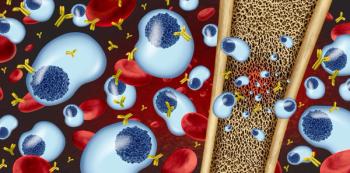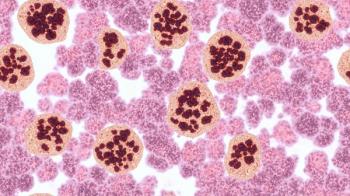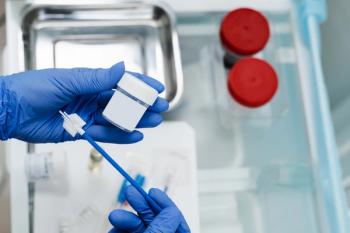
Environmental Disinfection Can Be an Affordable, Effective Way to Reduce C Difficile Infections in Hospitals
Targeted use of ultraviolet light and sporicidal treatment can reduce disease transmission alongside existing interventions.
Boosting environmental disinfection practices can be an affordable and accessible means of reducing the transmission of hospital-onset Clostridioides difficile infection (HO-CDI), according to a report evaluating the implementation of a cleaning protocol to reduce HO-CDI, with findings published in the American Journal of Infectious Control.
In the 18 months following the studied intervention—supplementary to existing strategies to reduce HO-CDI transmission—cases of HO-CDI decreased by 78.8% in high-risk oncology patients.
Approximately 500,000 individuals contract CDI every year, a disease that is largely characterized by mild to severe diarrhea. There has been an uptick in interventions aimed at reducing HO-CDI because most CDI transmission occurs in the health care setting.
It is difficult to find effective cleaning practices because C. diff spores can survive on surfaces in the hospital for a long time (i.e., in patient rooms or on medical equipment). Sporicidal disinfectant has been shown to effectively manage C diff, but increasing environmental cleaning efforts in areas with high-risk patient populations regardless of known CDI status may be even more effective at reducing transmission rates.
The oncology population is at increased risk of CDI because they have CDI risk factors— immunosuppression, aggressive treatment, long hospitalization, and use of antibiotics—so this study aimed to evaluate the efficacy and affordability of a CDI-reduction intervention for the oncology unit.
The intervention was led by an interprofessional group of health care workers. This team first identified existing interventions to prevent CDI transmission, then suggested implementing a series of environmental reduction strategies in addition to the existing list of interventions to eliminate all pathogens.
New environmental reduction strategies included:
o Electrostatically spraying the oncology unit patient discharges, regardless of known CDI diagnosis, with sporicidal disinfectant
o Weekly ultraviolet (UV) light treatment (UVDI 360 Room Sanitizer) of objects in the common areas, such as waiting rooms and nourishment rooms
o Daily use of a sporicidal disinfectant wipe to clean the 5 high-touch areas (bedside table, bedrail, intravenous pump and pole, cell and room phones, and call light) in all patient rooms.
In the 18 months leading up to the intervention, there were 13 cases of HO-CDI in the oncology unit (7.27 cases per 10000 patient days). After 18 months of implementation, HO-CDI decreased to 3 cases (1.54 cases per 10000 patient days), which marked a 78.8% decrease in cases.
There are limitations to this study. Because it was conducted during COVID-19, there might have been more strict disinfection initiatives to reduce the risk of infection. Another limitation is that this intervention is being evaluated alongside other longstanding interventions, which makes it difficult to determine the efficacy of this one alone.
Future studies should evaluate the effectiveness of these interventions in isolation, but this additional protocol appears to be an affordable and effective means of reducing disease burden in an at-risk population.
“A collaborative approach to disinfection of the patient care environment using minimal resources contributed to a significant and sustained reduction of HO-CDI rates among high-risk oncology inpatients,” authors wrote in the report.
REFERENCE
Langholz JM, Olree C, Jameson AP, Iseler J. Many Hands, Light Work: A Partnership Approach to Reducing Clostridioides difficile Burden on an Oncology Unit. Amer Journ of Infect Contr. 2024. Doi:10.1016/j.ajic.2024.02.002
Newsletter
Stay informed on drug updates, treatment guidelines, and pharmacy practice trends—subscribe to Pharmacy Times for weekly clinical insights.




















































































































































































































